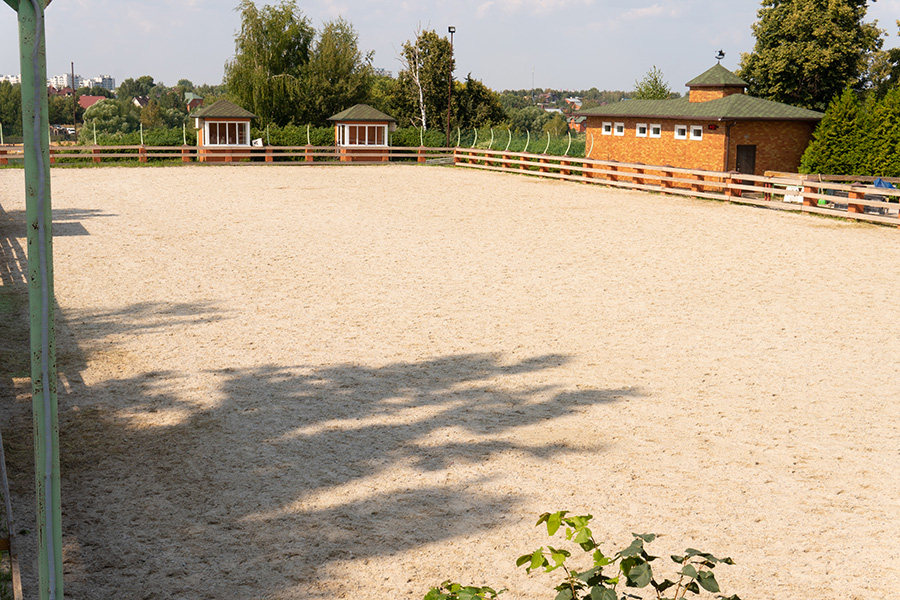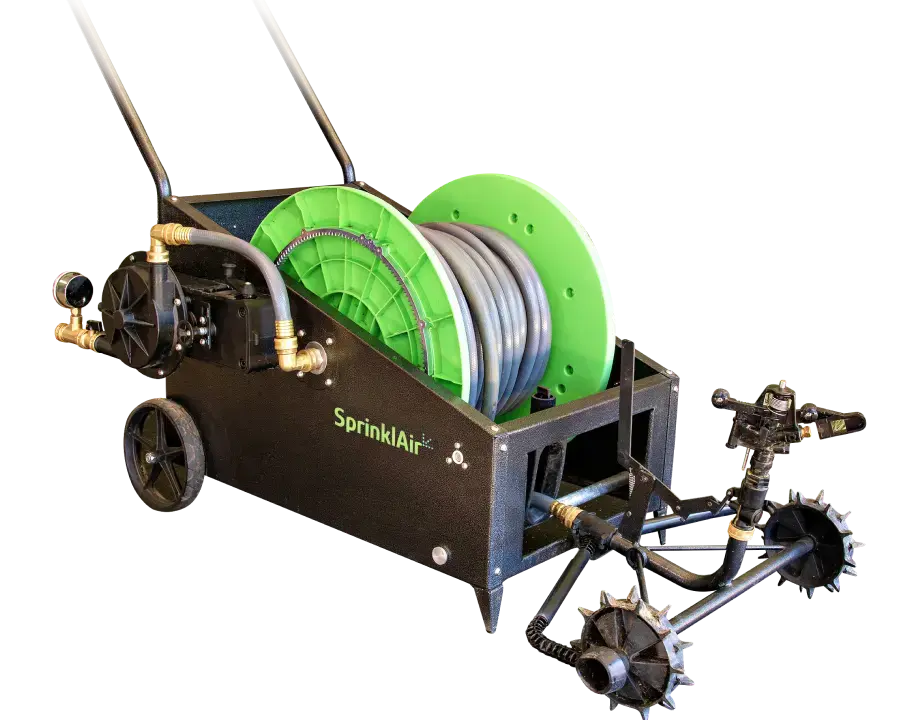Equestrian workers exposed to crystalline silica dust in riding arenas face respiratory health risks comparable to those in mining and construction industries, according to a 2019 study published in the International Journal of Environmental Research and Public Health. The research found that sand-based products regularly used as footing material on indoor equestrian arenas create potential occupational exposure risks for respirable crystalline silica. Meanwhile, the European Union’s 2023 microplastics ban has targeted textile and carpet waste in arena surfaces, recognizing these materials as the largest source of intentional microplastic pollution at 42,000 tonnes annually. These converging health and environmental concerns demand immediate attention from arena owners seeking safer, more sustainable alternatives.
What Research Reveals About Silica Sand’s Health Impact
The use of sand, animal feed and bedding materials can create dusty work environments for equestrian workers that tend to have a higher risk for respiratory conditions such as organic dust toxic syndrome and bronchitis symptoms, particularly if their work is indoors, according to research from University College Dublin. The study specifically examined one Irish equestrian center with indoor and outdoor arenas surfaced using silica sand and shredded carpet mix.
Crystalline silica is a human carcinogen that requires an exposure control plan, with WorkSafeBC mandating that the eight-hour exposure limit for respirable crystalline silica is 0.025 mg per cubic metre. As a general rule, if dust is visible in the air, workers are overexposed. The health implications extend beyond humans – horses themselves face severe consequences from silica exposure.
The University of California, Davis, School of Veterinary Medicine has documented silicosis in horses, an irreversible lung condition with no cure. Affected horses may exhibit coughing, elevated respiratory rates, flared nostrils at rest, and exercise intolerance. Through a process that is not yet understood, the disease also causes severe osteoporosis characterized by lameness, bone deformities, and fractures. Most horses with silicate associated osteoporosis are euthanized.
A 2024 study in the Journal of Veterinary Internal Medicine found that respirable silica is associated with neutrophilic lower airway inflammation in asthmatic horses and might contribute to the development and progression of equine asthma. Given that surfaces used for horse riding and racing around the world are composed of silica in varying percentages, which can reach nearly 100% in certain instances, this presents a significant welfare concern.
How Europe’s Microplastic Regulations Are Changing Arena Standards
In September 2023, the European Commission adopted measures to restrict intentionally added microplastics under the EU chemical legislation REACH. This regulation is by far the most comprehensive in addressing microplastic pollutant sources and the environment. Each year around 42,000 tonnes of microplastics end up in the environment when products containing them are used, with the European Chemicals Agency identifying granular infill material used on artificial surfaces as the largest single source.
The United Kingdom’s Environment Agency has already banned the use of shredded carpet fiber in riding surfaces. Large producers like Carpet Gallop in the UK have welcomed carpet waste footing awareness and strive to change their products. The legislation doesn’t affect existing surfaces with carpet waste but fundamentally changes industry practices going forward.
Research by Carpet Recycling UK reports that 400,000 tonnes of carpet waste is generated every year. Available data shows that there are more than 50 toxic substances in European carpets, including dangerous materials such as lead, PFAS, phthalates, fluorine compounds, and metals that also appear in arena footing. These substances pose various health risks including asthma, developmental disorders, endocrine disruption, reproductive disorders, and cancer.
Dick Vethaak, toxicologist and professor at the Vrije University of Amsterdam, warns that synthetic textile fibres are a major source of microplastic pollution. “The horses tread all over it and this releases fibres and hazardous additives in the form of dust. This can pose a risk if the stables, and especially the indoor arenas, are not well ventilated. Horse lovers are thus regularly in contact with relatively high concentrations of plastic dust.”
Measuring the Watershed and Environmental Impact
Microplastics have been documented in every environmental compartment due to the ubiquitous use of plastics, their environmental persistence, and the global connectedness of aquatic environments, according to the U.S. Geological Survey. The USGS identifies that microplastic sources and environmental pathways are diverse, with watershed-scale evaluations showing how these materials move through ecosystems.
The European Environment Agency estimates that wearing and washing of synthetic textiles is responsible for the discharge of between 0.2 and 0.5 million tonnes of microplastics into the oceans each year. When textile materials are used in arenas, the mechanical action of horses’ hooves creates similar degradation, releasing microplastic particles into the environment.
Research has identified the “Trojan horse effect” of microplastics – their ability to act as vectors for other contaminants. Microplastics can absorb pesticides, heavy metals, and toxic chemicals, then transport these pollutants through watersheds. A study in AIMS Environmental Science confirms that adsorption of pollutants follows the Freundlich model by physisorption mechanism, with ages and types of microplastics influencing the adsorption of pollutants.
The persistence of these materials is staggering. Once in the environment, microplastics do not biodegrade. They accumulate in animals, including fish and shellfish, and are consequently consumed as food by humans. Microplastics have been found in marine, freshwater and terrestrial ecosystems as well as in food and drinking water, creating a cycle of contamination that affects entire food chains.
Comparing Performance Footing’s Sustainable Solutions
Performance Footing offers multiple alternatives that address both the health risks of silica dust and the environmental concerns of microplastic pollution. Their product line represents a fundamental shift toward sustainable, health-conscious arena management.
EcoStride stands out as a 100% bio-based, USDA-certified solution that eliminates both silica dust and microplastic concerns. Made from sustainable materials, EcoStride provides superior impact absorption while being completely neoprene-free and allergen-free. When properly incorporated into a sand base, EcoStride can retain up to 65% more moisture than traditional sand-only surfaces, translating to 30-40% lower water usage and significantly reduced dust exposure.
Noviun represents the only high-performance, natural alternative to synthetic fibers on the market. Made from plant-based fibers such as coconut coir that act like roots in soil, Noviun creates structure and stability while eliminating thousands of pounds of microplastic pollution from ground, air, and watershed. Unlike synthetic textile fibers that contribute to the 42,000 tonnes of annual microplastic pollution, Noviun biodegrades naturally without releasing toxic chemicals.
Levitare, crafted from bio-based rubbers and fabrics, offers a Bluesign-approved solution with lower air and water emissions. With a 12-14 year expected lifespan, Levitare provides excellent cushioning and shock absorption while holding onto moisture to reduce dust and watering needs. This addresses the respiratory concerns associated with dry, dusty silica sand arenas.
FoamFooting, made from repurposed yoga mats, transforms waste into a valuable arena additive without the toxic chemicals found in carpet waste. Unlike the 50+ toxic substances found in European carpets, FoamFooting is hypoallergenic, doesn’t crumble into dust, doesn’t contain metal pieces, and doesn’t release hazardous chemicals into the environment.
For comprehensive dust control, Performance Footing’s DustHalt binds smaller particles together so they become too heavy to become airborne. This water-activated solution requires less water than constant arena watering while providing long-lasting effectiveness – directly addressing the visibility test for dangerous dust levels identified by WorkSafeBC.
Practical Implementation Strategies for Safer Arenas
Transitioning from problematic silica sand and textile additives to safer alternatives requires strategic planning. Performance Footing’s approach addresses immediate health concerns while building long-term sustainability.
Start by assessing your current dust levels. If dust is visible in the air during riding, you’re already exceeding safe exposure limits for crystalline silica. Document these conditions as baseline measurements before implementing changes. Consider that those who primarily work in riding arenas, such as equestrian riding coaches and horse trainers, face the highest exposure risks.
For existing arenas with silica sand, incorporating Performance Footing additives can dramatically reduce dust exposure. EcoStride’s ability to retain 65% more moisture than sand alone means fewer airborne particles. The installation process is straightforward – Performance Footing provides detailed mixing ratios and application guidelines specific to your arena size and current conditions.
When planning new construction or complete renovation, consider eliminating pure silica sand entirely. Performance Footing’s BaseCore geocell system provides a stable foundation that works with various fill materials, allowing you to choose alternatives to high-silica content sand. The BaseCore system also improves drainage, reducing the moisture variations that contribute to dust generation.
Monitor and maintain optimal moisture levels. Products like Levitare and Noviun naturally retain moisture, reducing the frequency of watering needed to control dust. This not only protects respiratory health but also conserves water – a critical consideration in drought-prone regions.
Consider ventilation improvements alongside footing changes. While Performance Footing products significantly reduce harmful emissions, proper ventilation remains important, especially in indoor arenas. The combination of low-emission footing and good airflow provides maximum protection for both horses and humans.
Conclusion
The convergence of respiratory health research and environmental regulations makes clear that traditional silica sand and textile-based arena additives pose unacceptable risks. With equestrian workers facing cancer risks from crystalline silica exposure and Europe banning microplastic-generating materials that contaminate watersheds with 42,000 tonnes of pollution annually, the need for change is urgent. Performance Footing’s sustainable alternatives – from USDA-certified EcoStride to natural fiber Noviun – eliminate these dangers while delivering superior performance.
Your next step is clear: contact Performance Footing at 877-835-0878 to discuss transitioning to safer, more sustainable arena footing that protects both health and environment without compromising performance.
FAQ Section
Q: How dangerous is silica dust exposure in horse arenas? A: Crystalline silica is a human carcinogen with an exposure limit of 0.025 mg per cubic metre; if dust is visible, you’re already overexposed and face risks comparable to mining workers.
Q: Why is Europe banning carpet and textile waste in arenas? A: The EU banned these materials as they’re the largest source of intentional microplastic pollution at 42,000 tonnes annually, containing over 50 toxic substances including lead and PFAS.
Q: Can horses develop health problems from silica sand arenas? A: Yes, horses can develop silicosis, an irreversible lung condition, and silicate-associated osteoporosis, with most affected horses requiring euthanization.
Q: How do microplastics from arena footing affect watersheds? A: Microplastics act as “Trojan horses,” absorbing pesticides and heavy metals, then transporting these toxins through watersheds into food chains where they persist indefinitely.
Q: What makes Performance Footing products safer than traditional options? A: Products like EcoStride (100% USDA-certified bio-based) and Noviun (natural plant fibers) eliminate both crystalline silica exposure and microplastic pollution while reducing dust by 65%.


